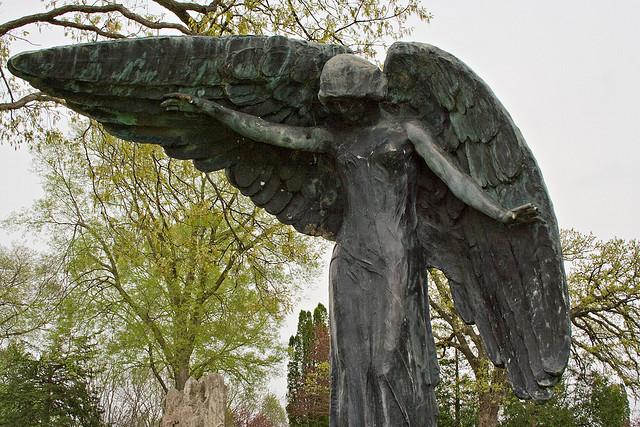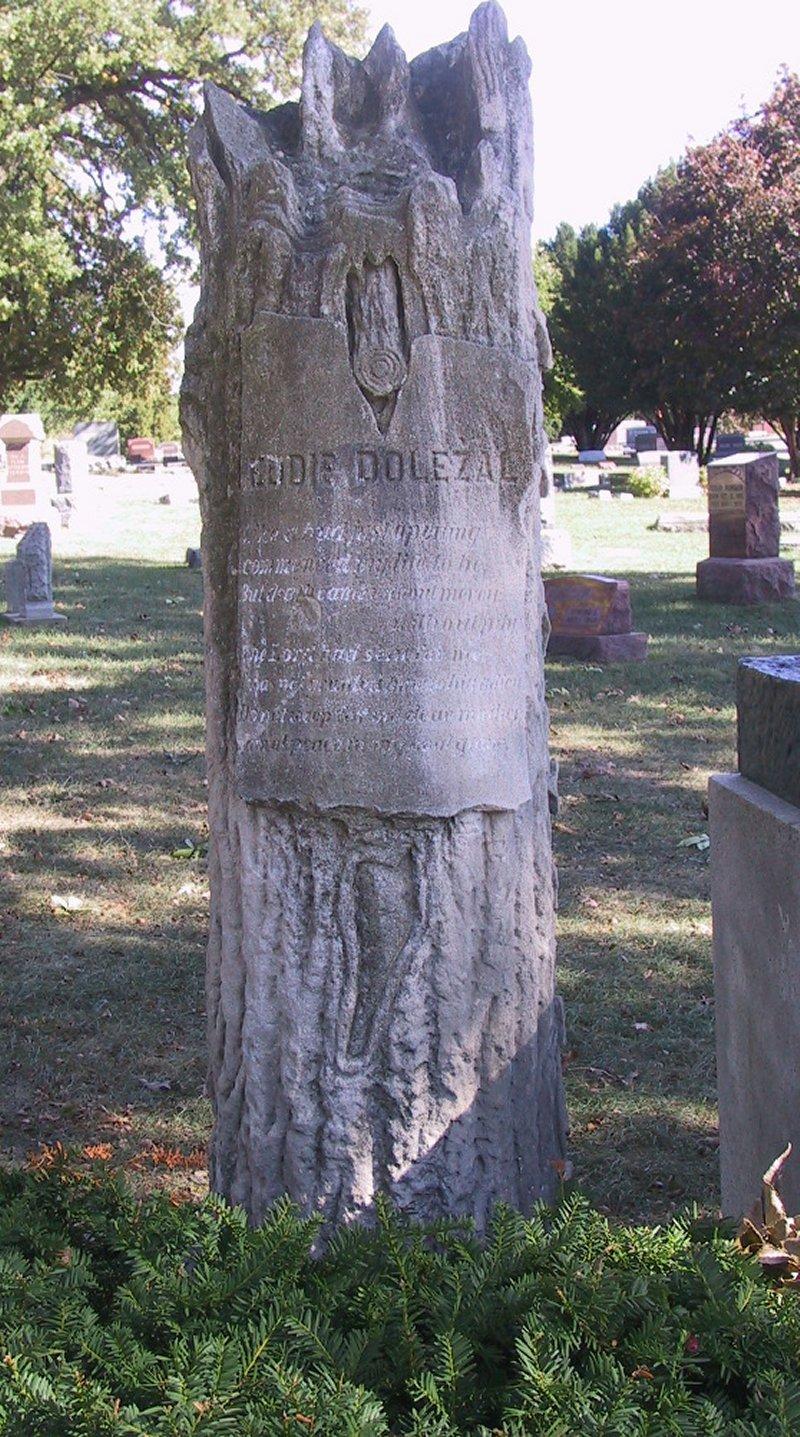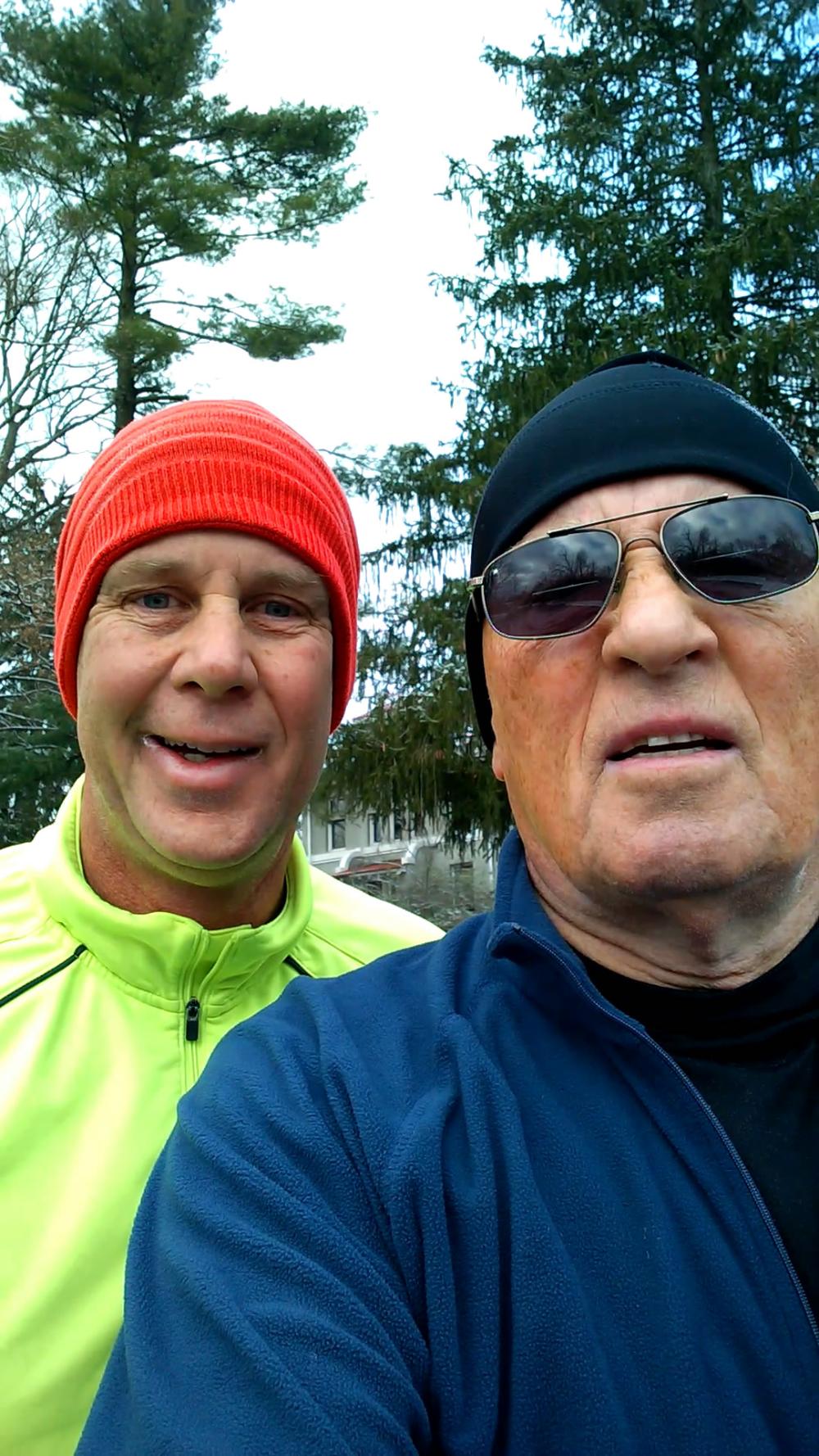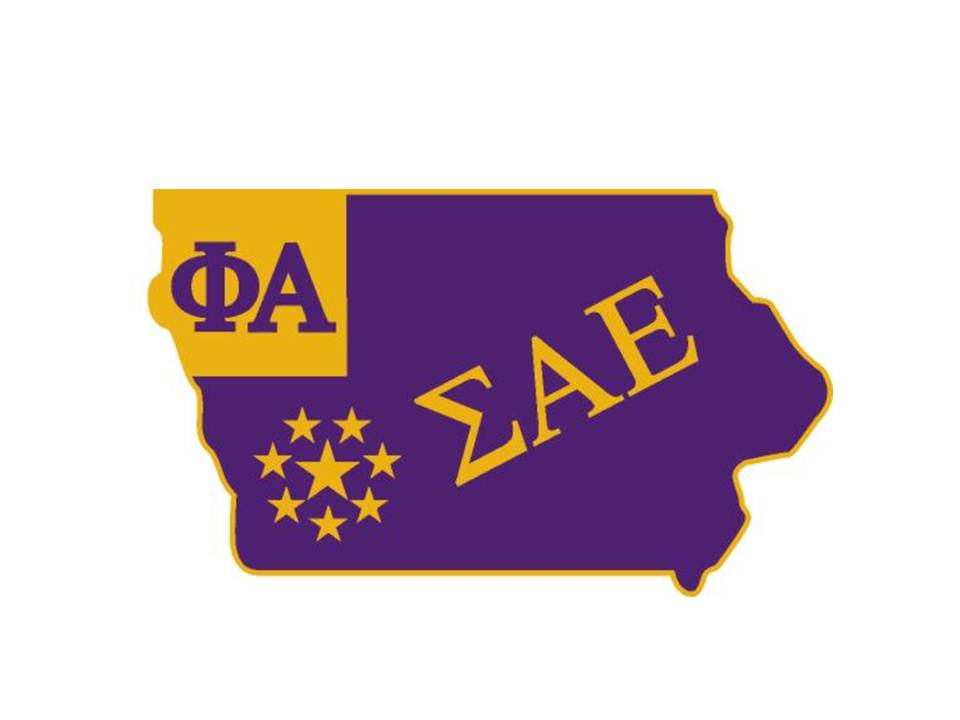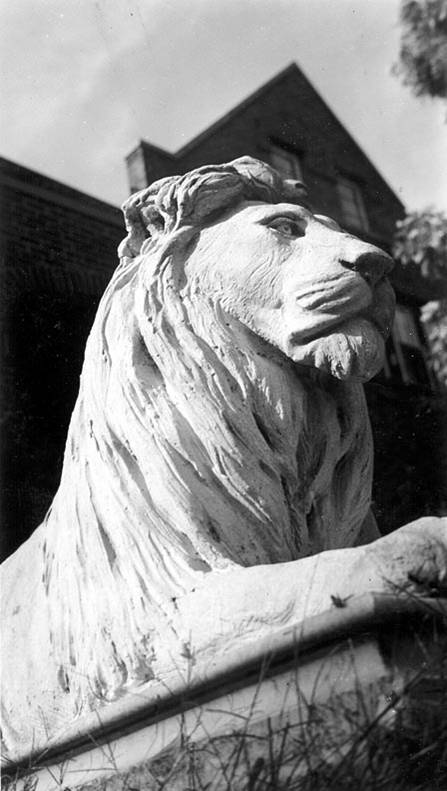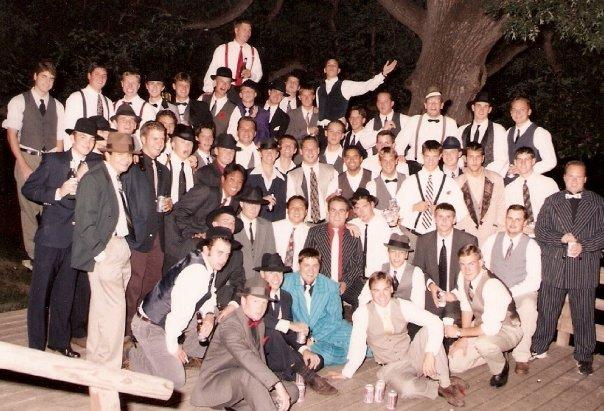
Serving the longest EA tenure in the modern IABE era, Jasper relishes his days in the house
By Greg Miller (IABE ’86)
Director and Chairman, Communications, Iowa Beta Alumni Association
When you talk to Chicago lawyer Tim Jasper (IABE’99) about his SAE days at the University of Iowa, you get the sense that things were pretty magical.
He holds the record in the modern Iowa Beta era as having served the longest as eminent archon, four consecutive semesters. Though many would argue that even one semester as EA can be a very demanding, exhausting and thankless job Jasper disagrees and said that he loved every second of it.
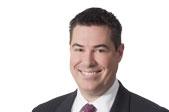
Growing up in Iowa, watching Iowa football games and wrestling meets, as well as spending time in downtown Iowa City, Jasper always knew he wanted to be a Hawkeye. However, pledging SAE was not the plan going in.
After his days as an undergrad at the University of Iowa had passed, Jasper went to law school at the University of Kansas. He graduated in the spring of 2002 and then headed to Chicago to begin his career practicing law.
One day he had a case where opposing counsel was from Davis Friedman, a premier Chicago law firm specializing in family law and established in 1946.
“I had a case against Davis Friedman and they got to know me and see me work,” he said. “They thought highly of me and recruited me.”
He accepted a position with Davis Friedman in 2005 and is now a partner with the firm.

Jasper grew up in Bettendorf, a town about an hour east of Iowa City by car, and graduated from Bettendorf High School in 1995. He was destined to attend the University of Iowa.
“I did not even think about going to another school,” Jasper said, “I always knew I was going to Iowa since I was a little kid. It angered my parents to no end that I would not even try to get into any other schools because I had pretty good grades and was actively involved. I only applied to Iowa because that is where my mind was set on going.”
Jasper majored in political science and received letters to go through rush his freshman year.
“The only two fraternities I wanted to join were SAE or Sigma Phi Epsilon,” he said, “I was a legacy four times over with my dad, two uncles and a cousin at Sig Ep. I liked Kappa Sigma when I went through rush and I had a couple high school friends in there, but they ended up cutting me. But it all worked out. I couldn’t have been happier with my four-year experience with SAE.”
Despite the staunch legacy, Jasper said that he did not pledge Sig Ep because they cut him on the final day of rush.
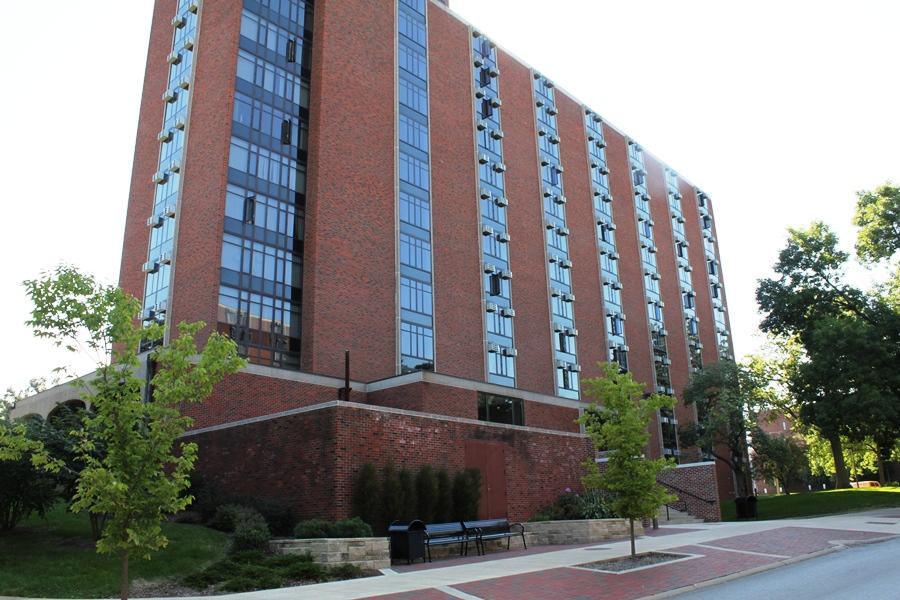
Jasper lived in Stanley Hall his freshman year and then lived in the SAE house his remaining three years. At that time, the SAE house was located at 707 N.Dubuque (the old Sigma Pi house). He went through pledgeship in the fall of 1995 and was initiated in March of 1996, receiving badge number 241882.
“I did not know one guy in the SAE house and looking back, it was all for the best,” Jasper said. “It forced me to make new friends and not fall into old high school cliques. Some of my closest friends to this day are my SAE buddies and I see them on a regular basis. We have been in each other’s weddings. I have life-long friendships.”
Jasper said it is bonus for a young man to think about joining a group of guys who do not know your past because you can start fresh and there are no preconceived notions of the “kind of guy” you are.
Beside his record-setting reign as Eminent Archon, Jasper’s first position in the house was scholarship chair in the fall of his sophomore year. He was then EA from the second semester of his sophomore year the end of fall semester of his senior year.
Jasper experienced the transition of Iowa Beta’s move from the 707 N. Dubuque house (located on the Iowa River next to Phi Delta Theta) back to 303 N. Riverside (now called 302 Ridgeland Avenue) in 1996. This is the ancestral home of Iowa Beta which was built around 1925 but was lost to Tau Kappa Epsilon in 1972.
Todd Johnson (IABE ’95) and Sean Denney (IABE ’98) were the two Eminent Archons during the time that preceded Jasper’s EA reign.
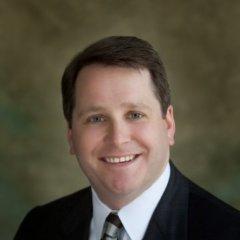
“I don’t recall a lot of detail about how the new house was negotiated but I remember there was a special meeting where we were told we were regaining the old house we had lost from the 70s,” Jasper said. “I recall that everyone was excited and saying, ‘We are not taking back the TKE house, we are taking back OUR house. Everyone was screaming and all excited about this event. I remember alumni Flip Klinger (IABE ’64) and Don Souhrada (IABE ’93) were among those there taking part in all of this.
“When you see alumni who are much older than you jumping up and down, you knew that this move was something pretty special. For some of the guys who were older than me, their entire experience was at the 707 N. Dubuque location. They have very fond memories of that house. There were big parties and a big deck that overlooked the Iowa River as well as a sand volleyball court.
“I remember helping during the move and I won’t forget how tough it was to move those lions that weighed a ton,” he said. “We had to rent a fork lift to get them over to the new house on the hill.”
Jasper stepped down from the EA position the final semester of his senior year because he felt he had served his time and thought it would best to start focusing on the next step of his life. He remained very involved with SAE business and social events.
He served an unusually long tenure because the men in the house were unsure of the direction of others considering and running for the EA position would take.
“I was really pressed to run again so I said, ‘yes,’ ” he said. “I really feel like SAE grew and we had benefited from some great talent in our pledge classes. We were outstanding in athletics and we won the all-around sports title in the fraternity league. We also had guys who were good at all the ‘bar sports’ like darts and bowling.”

During Jasper’s senior year, SAE went to the flag football championship for the entire school and had the purple and gold won that, SAE would have gone on to compete in an all-university flag football tournament.
Jasper said he recalls many great SAE experiences, including the last day of his pledgeship.
“The pledges were told to meet at the house,” he recalled. “They were put on a bus. We were driven out to some guy’s farm out in the middle of frickin’ nowhere. I wanna say it was between Solon and Cedar Rapids. The men were told they had to run an obstacle course.
“It was cheesy but at the end you had to run across the finish line and all the actives were there and as you as you crossed, your pledge dad tackled you and handed you a beer and you went over to the bonfire and partied until the wee hours of the morning,” he said. “It was so much fun! I still remember running up this muddy, cold, nasty hill but the monster bonfire and camaraderie made it a ton of fun.”
Jasper said ritual was always well executed but robes were not part of the ceremony because they didn’t have the proper equipment.
“We started the house meetings by reciting The True Gentleman and everyone gave their reports,” Jasper said. “At the end we sang Friends. Everyone respected our songs and did not trample on it.Someone may have sung a bit off key to get a laugh but nothing was disrespectful. The guys took our traditions seriously.”
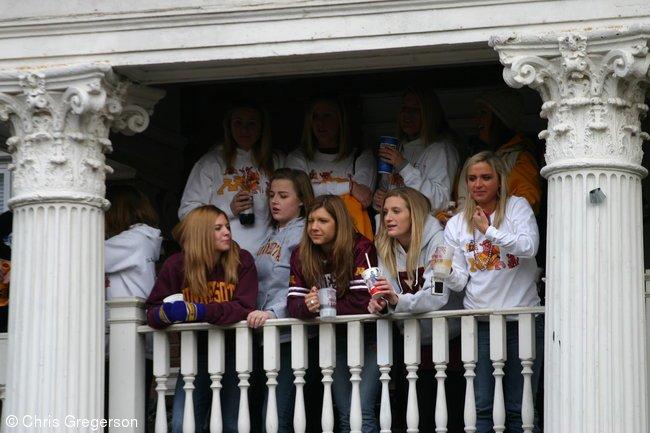
Jasper said the fraternity sang and serenaded sororities, especially during Homecoming Week. Pledge classes were required to be a part of serenading.
“Every year I was at Iowa, at least one guy lavaliered his girlfriend,” he said. “We’d probably get in trouble for hazing by today’s standards but it was a ton of fun. We’d help the guy get drunk as a skunk, and he would strip down to his boxers. Then we’d get some non-permanent markers and we would write all over him.”
Usually the event was scheduled after the Monday night SAE meeting. The SAEs would notify the chosen gal and her friends that they were coming to their residence. Most of the time it was a sorority. The marked man, drunk with love, would be out in his underwear, covered with graffiti as the SAE flag was draped over him like a cape. The love-struck Lothario would then have to sing an SAE song or two of his choice to his girlfriend.
“The guy would attempt to pin his girlfriend but it never worked because he was too far-gone,” Jasper said. “We would all clap and cheer for him and someone would take him home. Then if it was a sorority, some of us would all go out with the girls.”
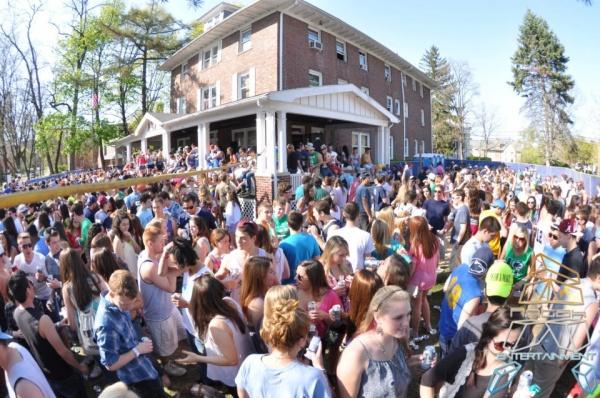
At the time that he pledged the fraternity, SAE was not regarded as the best fraternity on campus, but was steadily working toward that goal. But by the time of his graduation, the men on the hill had really elevated their status on campus and were considered to be in the top tier.
“We had a great reputation with the sororities and many parties were four-way or eight-way Greek mixers,” Jasper said, “And the guys that we recruited took SAE to one of the top houses if not the top house on campus.”
Jasper said by 1997 the rules on alcohol became much more stringent. Big parties that included alcohol at fraternities were outlawed.
“My sophomore year there was an eight-way Greek party at Sigma Nu and the place was mobbed with people. In my junior and senior year, that kind of party was not allowed,” he said. “I think the Greek system is threatened by all this control in some way. It was not like our entire life revolved around drinking. But look around at the campuses across the nation . . . drinking happens even if your are not Greek!”
Jasper said it is important for people to be responsible and added, “You do not have to have been in a fraternity to have access to alcohol or to consume to inebriation.
“I remember a big phrase at the time was ‘binge drinking.’ And the school’s definition was that if you had more than four drinks at one sitting, you were binge drinking. If you use that definition, people who are much older than college kids are binge drinkers,” Jasper said. “I think the Greek system is unfairly singled out.”
Jasper said his dad told him when he was an undergraduate at Iowa, the brothers in Sigma Phi Epsilon would roll empty kegs down Dubuque Street down into the Sigma Pi house.
“No one said anything about that in my dad’s time,” Jasper said. “But if you did that today, you would be in trouble with the school, the police and possibly get booted by your national office.”

Jasper advocates responsible alcohol consumption and good health and safety practices, but “the transformation to stricter rules on alcohol has been happening for a long time and you could easily see the screws tighten in just the four years I was there.”
He continued, “And it actually can be argued that these rules make things worse because people would turn to the bars and then possibly drive home drunk instead of just staying at the house and leaving their cars parked.”
Jasper said that at times money ran short and so the house would rally to recruit more men to spread out the costs. But most times, the financial issues were not insurmountable. And recruiting strong talent was not always easy. He also said some guys struggled with grades but as a whole, the house GPA was good and there were no issues.
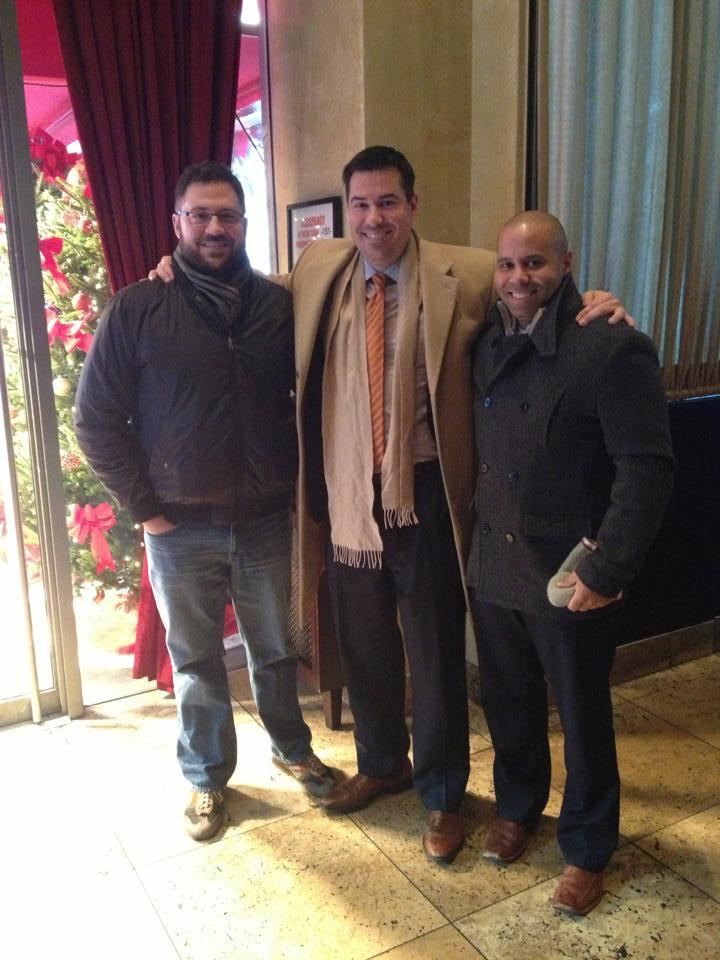
“My time there was a great experience,” he said, “Sure we had some hard times but there were plenty of unbelievably great times. I really felt like my SAE experience helped to mold me into the person I am. Some of the characteristics that benefit me in my career can be attributed to being a leader in college.”
Jasper is still a huge friend with Dainius Dumbrys (IABE ’99) from the south side of Chicago. They were in the same rush group, were both in each other’s wedding and are attorneys today. He also keeps in contact with brothers Chad Erwin (IABE’97), Steve Altman (IABE ’99) and Jeff Kilkenney (IABE ’99) among others.
“We still all hang out, talk Hawkeye football and rib each other about our SAE days,” Jasper said. “And there are guys I was not that close to but if they reached out to me, I would help them. Often, things that were issues back at school are long forgotten later as we mature.”
Jasper said he feels it is highly beneficial when the alumni and the chapter collegiate have a chance to interact.
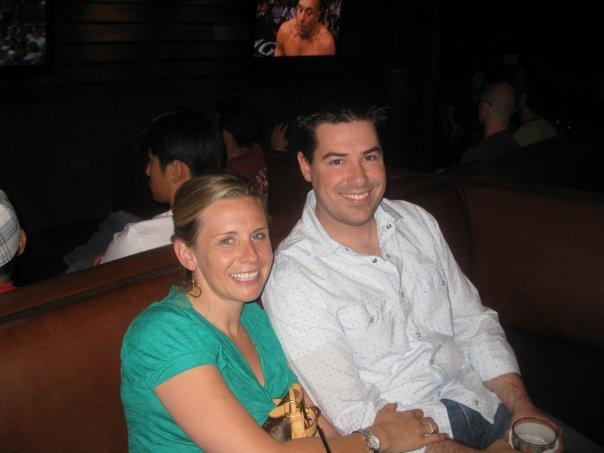
“One year, either my junior or senior year, we made a concerted effort to have the alumni come over to the house during Homecoming,” he said. “We put together a nice brunch and we had a great turnout. And when we sat around and talked to the alums about old stories. It just made it a great experience. I think it is important that the alumni come back and share the heritage and traditions of SAE. I remember (attorney) Flip Klinger coming to the house and I thought, wow, if I can be like that guy, I am going to be in good shape.”
Jasper said looking back, SAE helped prepare him for the next phases of his life.
“SAE gave me the chance to lead and learn about what things work and don’t work,” he aid. “It was invaluable to develop organizational skills to try and get 60-something college-aged men to participate in various roles and activities. SAE exposed me to all kinds of backgrounds, races and religions. I got to learn and appreciate people’s differences and views on the world.”
Jasper is married to Katie, whom he met in Chicago after law school. She was a member of Tri Delta sorority at the University of Iowa. They reside in Hoffman Estates, Ill. with their two children, Jackson, 7 and Avery 4.
A lifetime of service and duty drives Biermann
By Don Souhrada (IABE '93)
Guttenberg, IA native Jason Biermann (IABE '91) received Sigma Alpha Epsilon badge number 222436 when he was initiated by the Iowa Beta chapter on February 7, 1991.
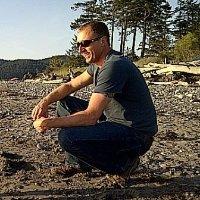
About a year later, Biermann was awarded another badge -- this one with a much lower badge number.
The United States Army Tomb of the Unknown Soldier Guard Identification Badge, at 628 badge holders, is the second least-awarded badge in the U.S. Military -- second only to the Astronaut Badge. Biermann was awarded badge number 388.
Already a member of the U.S. Army reserves when he joined the Fraternity, Biermann was drawn to SAE’s ritual and traditions.
“SAE is very much like the military in that it is steeped in history and tradition. I studied history at Iowa and the focus on history in the Fraternity really appealed to me.”

“I was on a trip to Washington, D.C. and visited the Tomb of the Unknown Soldier,” Biermann said. “Once I saw the precision of the Sentinels, I knew that I wanted to do that.”
Biermann would recognize this role as his calling to serve as an active member of the military. He left Iowa after his sophomore year to join the 3rd U.S. Infantry Regiment, nicknamed “The Old Guard” because it is the oldest active duty regiment in the U.S. Army. Its mission is to conduct memorial affairs to honor fallen soldiers as well as ceremonies to represent the U.S. Army -- a mission that dovetailed perfectly with Biermann’s passion for history.
Biermann finished his undergraduate degree through American Public University. In addition to serving in the Army Reserves and working full time, Biermann is currently a graduate student in the Naval Post Graduate School Center for Homeland Defense and Security in Monterey, CA, where he is earning his Master of Arts in Security Studies.
As an Army Reservist, Biermann is a command sergeant major -- an E9 -- the highest rank an enlisted soldier can achieve.
He serves the battalion commander as the senior enlisted advisor, where he is responsible for advising the commander on the battalion’s training, morale and discipline. He is the commander’s “eyes and ears;” serving as a trusted agent on anything that impacts the soldiers’ ability to perform.
Biermann's dedication to service extends into his civilian life as he serves as the Deputy Director for the Snohomish County, Washington Department of Emergency Management. It is a role that he was promoted into just three weeks after a landslide that took place about an hour and 15 minutes north of Seattle.
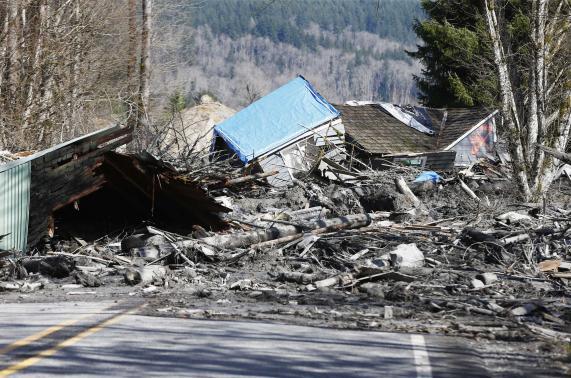
On Saturday, March 22, 2014, a massive mudflow occurred when a portion of an unstable hill collapsed.Mud and debris crashed across the Stillaguamish River, engulfing a rural neighborhood and devastating anything in its path.
According to Biermann, the landslide contained 10 million cubic years of debris, which he described as behaving like quicksand. It was as deep as 75 feet in some parts, and covered an area of approximately one square mile.It was one of the worst natural disasters in Washington’s history and ranks as the deadliest landslide in U.S. history as it killed 43people.
Biermann learned of the disaster as he was returning from two weeks in residence at the Naval Post Graduate School. He had stopped at his Army Reserves unit's headquarters in Tacoma to catch up on some Army Reserve work before heading to his home in Mt. Vernon, WA.
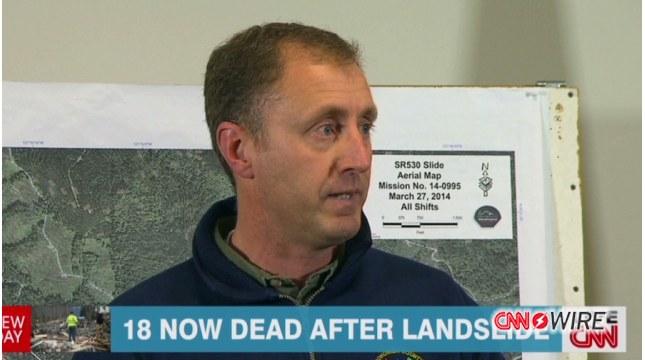
His cell phone began to ring repeatedly with texts and emails indicating a large mudslide had occurred in Snohomish County and the Emergency Operation Center was activating. All emergency management personnel were instructed to report immediately.
As the horrible and dangerous situation for the people in the area unfolded, Biermann sprang into action.
By chance, he had toiletries and extra clothes with him, so he was ready to report for duty. With his son, Oliver, 5, safe with his mother, and after arranging for a neighbor to watch his home, Biermann immediately left for the disaster site.
Once there, Biermann was tasked with building a workable system for emergency management in Darrington, WA, a community on the east side of the slide, which had been cutoff from the rest of the county. The initial work required several 20-hour days.

“During those first three days, I think I slept 4-5 hours in total," Biermann said. "We all slept wherever we could, whenever we could. The first night was on the floor of the Arlington (WA) City Hall. The next, I was in the Darrington mayor’s office. The Forest Service opened up a place where we could sleep for a few nights. During the days, if I could, I would catch a nap in an administrative office in the Darrington Fire Department.
“We activated a process that we had been planning in the event of such a disaster. Our initial goal was to save as many people as we could and recover as many victims as possible.”

The responders extracted fourteen people on the first day of the slide. Thirteen of those people survived. The tireless efforts of the searches resulted in the recovery of all of the bodies that perished. Several agencies and individuals continued to assist the survivors.
Reflecting back on the crisis, John Pennington, director of the Snohomish County Department of Emergency Management, stated that placing Biermann to serve in Darrington “became one of the most critical and effective decisions we made during the incident.”
Biermann’s actions were heroic and saved lives. But at the height of the disaster, it was the encouragement he received from his family and fraternity brothers that got him through the emotionally intense rescue and recovery efforts.
“My pledge dad, Brian Kingery (IABE ’91) sent me an email during the recovery,” said Biermann.“Without support from Brian and others, I wouldn’t have been able to do my job. It was critically important."
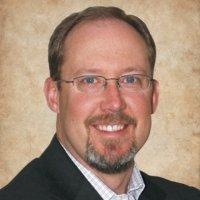
Remembering Biermann as his pledge son, Kingery said, "As a pledge dad you're tasked with teaching the house tradition and being a mentor. I think Jason was every bit as much of a mentor to me as I was to him. I'm not surprised at all by his role and ability to coordinate the efforts in the mudslide last spring -- his ability to lead was apparent even in his early days in the house."
Kingery is a Director and Chairman of the Member Services committee for the Iowa Beta Alumni Association.
Biermann recalls Iowa Beta as a chapter on campus with a strong reputation.
“Before I pledged, I played a lot of volleyball. Tom Hubner (IABE ’92) was one of the guys on my team and he invited me to take a look at joining SAE. I recognized the brothers as being really focused on athletics. There wasn’t an attitude that was elitist or too party-centric. I found a well-balanced group of guys and that’s what I liked.”
Spending time with the brothers provided Biermann great memories of the house -- especially the pledge class skip to Ann Arbor to visit Michigan and Paddy Murphy parties. But if there was one thing that Biermann would have changed, it would have been to prioritize the Fraternity more during his time at Iowa.
He provided this advice for the future active brothers of Iowa Beta.
“Make the Fraternity a priority in your life," he said. "I honestly wish I would have focused more on SAE when I was at Iowa. The Fraternity can be a really important community for an undergraduate.
“It meant a lot to me when Brian (Kingery) contacted me during the slide and I wish I had done a better job of solidifying all of the relationships I had in the house. I had my responsibilities, like the Reserves, but we all have lifelong distractions. If you’re going to get the most out of something you really need to make it a priority and commit to it."
"SAE introduced me to the idea of brotherhood, which is really what the Tomb Guard badge holder really is."
QUIZ ANSWER: D. Seashore Hall is named for an IABE SAE
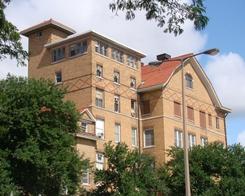
The campus building named for an Iowa Beta SAE is Seashore Hall, named for Dr. Carl Emil Seashore (IABE 1905).
Seashore was born on January 28, 1866, in Kalmar County, Sweden. He emigrated with his family to the United States in 1870 and they settled in Iowa.
He attended Gustavus Adolphus College in St. Peter, Minnesota and studied mathematics, music, and classical languages and literature. He graduated in 1891. Seashore worked his way through college by serving as the organist and choir director of Swedish-Lutheran church.
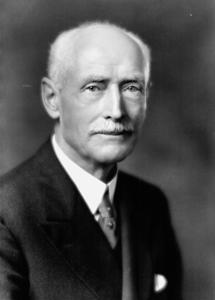
Seashore attended graduate school at Yale University, New Haven, Connecticut, when it just opened its psychology department. In 1895, Seashore was awarded the school’s first Ph. D in psychology for his dissertation on the role of inhibition in learning.
Shortly thereafter, Dr. Seashore accepted a teaching position at the University of Iowa, where he would remain for the rest of his life. It was during this time that he became close friends with Dr. Wilber J. Teeters, Dean of the College of Pharmacy and the principle founder of Iowa Beta.
Teeters convinced Seashore to join Sigma Alpha Epsilon and become associated with the Iowa Beta chapter. Seashore was initiated into the fraternity in Iowa City on February 11, 1905 by then-ESA William C. Levere. He received SAE badge number 4210.
Seashore became a nationally prominent psychologist and was soon promoted to chairman of the Department of Psychology. He served as Dean of the Graduate College from 1908 - 1937. Additionally, Seashore was elected the 20th president of the American Psychological Association in 1911. In the 1920s, he developed Iowa's School of Fine Arts, along with Dr. Walter Jessup. During his career, Seashore published 237 books and articles.
Dean Carl E. Seashore remained actively involved with Iowa Beta until he entered the Chapter Eternal on October 16, 1949.
Originally built in 1899 as a hospital and located at 231 E. Jefferson, Seashore Hall houses the Departments of Psychology and Sociology. It was named for Dr. Seashore in 1981.
Did you know?
The Oakland Cemetery in Iowa City is home to a curious landmark, nicknamed "The Black Angel."
There are many myths and legends surrounding The Black Angel and it has become a favorite for late night visitors, especially on Halloween. It is said to be cursed and anyone who touches The Black Angel will die a horrible death within 7 years.
Among the most common myths is that the angel marks the grave of an evil woman, named Rodina Feldevertova (the inscription on the grave.)
As the story goes, even though she was supposedly a horrible woman, Rodina's husband loved her very much and when she died he had a beautiful white marble angel statue carved in Italy and shipped to Iowa City for her grave.
It had been raining for forty days and forty nights since she died at which point the beautiful white marble angel was finally hoisted upon her tomb. But lightning immediately struck the statue, causing its head to hide in shame and turned the statue's color black. Additionally, a tree nearby was instantly petrified into stone.
In reality, the eight and one-half foot angel statue is made of bronze (not marble) and turned black with age. It was erected in 1912 by Teresa Dolezal Feldevert as a grave marker for her late husband Nicholas' ashes and for herself. Nicholas Feldevert died in 1911.
The adjacent "petrified tree" is actually a tree stump tombstone that she had earlier erected for her son Eddie Dolezal's grave, who died of meningitis at age 18 in 1891. Teresa and Eddie had immigrated to America from Bohemia and moved to Iowa City. After Eddie's death, Teresa moved to Oregon and met her soon-to-be second husband, Nicholas Feldevert.
Sadly, Nicholas passed away shortly thereafter and Teresa returned to Iowa City upon his death.
The inscription "Rodina Feldevertova" on the grave is not a person's name and it essentially translates into the "Feldevert family." An additional oddity is that Teresa's birth date is listed on the tomb but she does not have a death date listed and it is unknown if she is actually buried there.
Like father, like son
Jim "Cowboy" Grove (IABE '63) joined the Iowa Beta Alumni Association in 2013 and shortly thereafter his son Jeff Grove (IABE '88) also became an official member, making the Groves the first father and son duo to join the alumni association.
Today, Jim lives in Crossville, TN, while Jeff lives in Louisville, KY. They are pictured here on Thanksgiving Day 2014 after participating in a 10K and 5K run for charity.
Jim and Jeff Grove are both True Gentlemen of the highest order.
Do you have your Iowa Beta Alumni Association certificate and membership pin yet? If the answer is no, you are not an official member.
For the past two years, we have worked hard to keep you proud of Iowa Beta. And, we will soon begin the process to rebuild the Chapter. But we need your help!
The Iowa Beta Alumni Association is the second largest alumni group in the SAE realm and has won recognition and awards for its programs and initiatives. We have made a lot of progress but we want to count you as an official member.
Joining the alumni association is the primary way most alumni can participate. It fast, easy and free. No fees are required.
We simply need you to confirm or update your contact information so we can keep you informed.
Can we count you in?
Please take a moment and join right now by clicking on the Join Today! button below.
Thank you and Phi Alpha!
Have you moved?
If you have moved, changed your address, cell phone number or email address within the last 8 months, please let us know so that we can keep you informed on the latest Iowa Beta developments.
The Iowa Beta Alumni Association values your privacy and will never sell or provide your contact information to other organizations or any third parties without your permission.
By updating your contact information, you will automatically become a member in good standing of the Iowa Beta Alumni Association.
To update your contact information please click the UPDATE button below.


